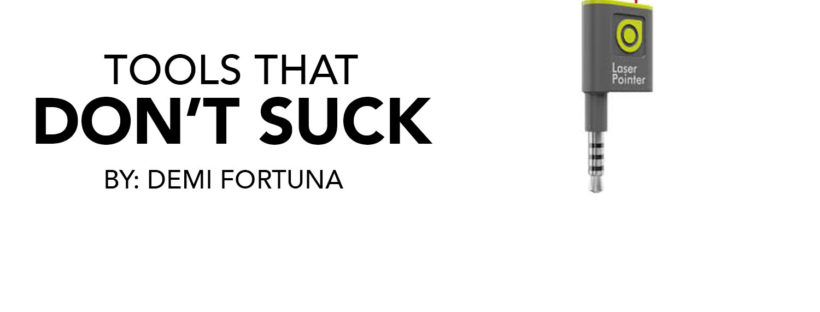As water feature installers, my sons and I are used to hard, dirty, sometimes dangerous work. We enjoy what we do, whether it’s digging ponds, plumbing pumps, rolling boulders or tweaking waterfalls, but we also value anything that helps make the work easier or more fun. We’re always looking for tools, apps or gadgets that save time & effort, eliminate stress, add to our comfort on the job or are just fun to use. Often a buddy will turn us on to one. I’d like to return the favor by passing our favorite Tools That Don’t Suck along to you.
Handy Phone Tool
So, as you might expect, I often get asked to recommend a particular pump for a contractor’s project. The steps are simple and easy (not the same thing.) There are four simple steps to finding the right pump:
- determine the required flow
- choose the right size pipe
- add friction head to vertical head height
- go to the charts to find a pump that delivers the right flow at the right head
The steps are easy. Multiply the flow per foot by the width of the waterfall, in feet. Pick the right size pipe by finding the flow on a chart. Add up plumbing length. Multiply the length by a decimal. Add that result to the actual vertical height of the waterfall to find the Total Dynamic Head (TDH) – and there’s the problem.
It turns out that most people overestimate the actual height of the water feature they’re planning on building. By a considerable amount. It’s particularly hard for anyone to estimate true vertical height on a slope, where many of our potential projects are situated.
Why does that matter? Well, you need to know the true vertical height of the water feature to find the actual load the pump will be under. Knowing the true workload not only lets you pick a pump that will thrive under those conditions, you can also cut costs by using very efficient low head pumps…IF you correctly estimate the vertical head height.
The Ryobi ES1500
 Photo credit: www.ryobitools.com
Photo credit: www.ryobitools.com
I have come to appreciate the Ryobi ES1500, a little gadget that takes the guesswork out of measuring height. It fits on any phone with a headphone jack. (Sorry, you need to have the jack.) I found mine at a tool store under a banner advertising Ryobi Phoneworks. For $15, I figured I didn’t have much to lose. I paid willingly, if a little dubiously, and downloaded the free app.
The “Laser Pointer/Transfer Level” plugs into the standard headphone jack on my Android phone and shoots a bright red laser beam on command. The app has a couple of level functions, including a bubble level. The easiest to use is a red dotted line with the numeric value of degrees the unit is tilted displayed right next to the line. Once the phone is level, at 0 degrees, the beam coming out is pretty level too. The accuracy of the unit isn’t stellar, but it’s close enough. It’s just bright enough to be seen in the shade during the day. I do most of my estimates after work, and it’s really visible as the light falls.
I’ve gotten pretty adept at holding the phone level, at head height, while standing where the pond will go. I note of where the roughly five-foot-high laser beam hits on a tree or a slope near the waterfall-to-be. For larger distances, I’ll repeat the process, moving to where the beam struck the ground, until I’ve worked my way upslope, five vertical feet at a time.
I will admit it’s a bit crude, but it works well enough to get a pretty accurate vertical height for the Total Dynamic Head calculations.
The Ryobi ES1600
So, as I’m finishing up writing this, I look up the Ryobi ES1500 to find there’s a new version, the ES1600, that sounds like it has my shaky eye level zapping method beat all hollow. The newer version clamps onto the phone and lets you snap a shot of the site with the camera and get a picture with the level marked directly on it. Sounds a whole lot easier to have the pic right there to refer to. I still see the ES1500 out there for $15-20 and I’d still call it a Tool That Doesn’t Suck. The newer version is double that, but might be worth the $40 if if gives you a permanent record right on a photograph. I’m gonna pick one up and let you know next month. In the meantime, I’ll continue using my TTDS, the Ryobi Phoneworks ES1500. Might work for you too.


